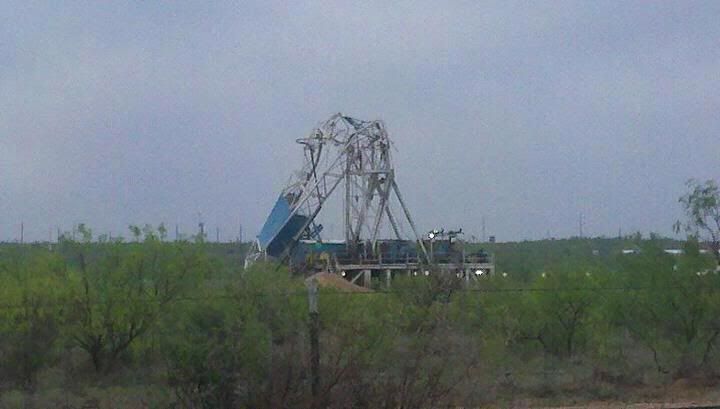On the subject of pressure, as someone stated the mud holds back the formation pressure. The deeper you go the higher mud weight.
There is a HUGE differance in pressures at the same depths across the same basins.
I can show you in South Louisiana where at 11500 feet we encountered 5000#(10.2# mudweight, 2.7mm$ drilled and completed)) bottom hole pressures. Then show you once you cross a huge down fault be at 11,500 and have pressures of 9000#(15.8 mud weight, 4.2mm drilled and completed) bottom hole pressure. It is not universal like most people think. Formations and faulting has a huge impact on pressure. We drill all the time what we consider "normal" pressure wells in Mississippi with no intermediate pipe down to 13-14000' with just surface casing. Then we have drilled some in south Louisiana where we had to have intermediate casing to drill a 9000' well because pressures were too great.
Some offshore deals we have looked at have the hundreds of millions per well dollar tag on them with every intent to drill it and plug it just for evaluation purposes, one being drilled right now just offshore La. Davy Jones
When playing with the big boys and bigger numbers several millions barrels is a possibility.
ALso oil business is one of the only ones where you do not get full % of what you spend.
Say you pay to drill 100% of the well, after 12.5% severance tax, then 25% royalty to land owners. the best you could possibly get back out of your 100% is 62.5% of what the well makes.
There is a HUGE differance in pressures at the same depths across the same basins.
I can show you in South Louisiana where at 11500 feet we encountered 5000#(10.2# mudweight, 2.7mm$ drilled and completed)) bottom hole pressures. Then show you once you cross a huge down fault be at 11,500 and have pressures of 9000#(15.8 mud weight, 4.2mm drilled and completed) bottom hole pressure. It is not universal like most people think. Formations and faulting has a huge impact on pressure. We drill all the time what we consider "normal" pressure wells in Mississippi with no intermediate pipe down to 13-14000' with just surface casing. Then we have drilled some in south Louisiana where we had to have intermediate casing to drill a 9000' well because pressures were too great.
Some offshore deals we have looked at have the hundreds of millions per well dollar tag on them with every intent to drill it and plug it just for evaluation purposes, one being drilled right now just offshore La. Davy Jones
When playing with the big boys and bigger numbers several millions barrels is a possibility.
ALso oil business is one of the only ones where you do not get full % of what you spend.
Say you pay to drill 100% of the well, after 12.5% severance tax, then 25% royalty to land owners. the best you could possibly get back out of your 100% is 62.5% of what the well makes.

Comment